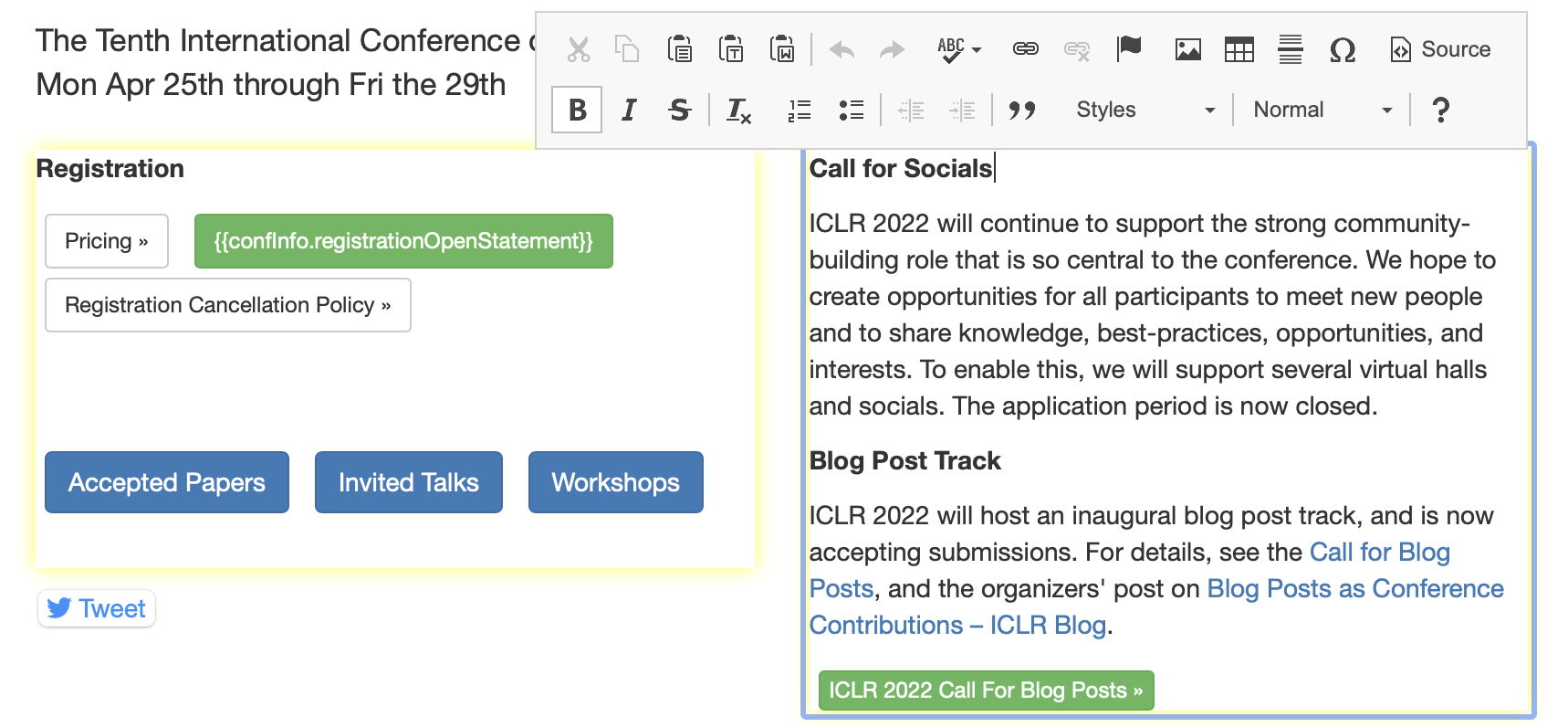¶ Getting Started
- You must be logged in to an account that has been given editing privileges.
- Editable content can appear either as a standalone page or it can be embedded in to a page that is otherwise HTML from the website.
- Editable content is stored in the database
- Changes to editable content are publicly visible immediately. There is no undo. In case of an editing disaster, reach out to the Eventhosts team to have us correct it.
¶ Editing an Existing Conference or Virtual Site Document
On pages that have editable content, there will be an icon in the lower left at the bottom of the page that will activate the editor.

Once you've activated editing, a ring will appear around all editable content. Click the area you want to edit a formatting toolbar will appear above the editable content. The “Source Code” button allows you to touch up the source code in HTML if desired. There is a paste from Word icon that will accept any rich text content that you want to copy / paste.

When you've finished editing, click the original activate editing button, which has since changed to a save (floppy disk) icon.
Clicking outside of the editing ring also saves.
If you see things enclosed in curly braces ( e.g. {% date “WorkshopVideoUploadDate” %} or {{ registration.user.email }} ), do not disturb them. They are Django Template Tags that add databased content to documents. The Calls usually have many of these tags that pull dates from the database.
To discard changes, reload the page.

¶ Creating a new Document
Accounts with editing privileges will have a new menu in their sidebar.

Choose Admin, Documents, then click the Create New Document button. Fill in the Title (used only if the document is viewed as a standalone page), and Body. The Body cannot be left empty, so you may put some placeholder HTML in the body that you will edit in the inline editor later, such as a dot.
The textid field is the URL where you will view the document. There are permissions associated with the textid pathnames. It is suggested that you create documents with textids that begin with one of the following:
Under the /Conferences page we usually indicate the year. E.g. /Conferences/2022/CallForPapers. There is no need to end the textid with .html. Avoid spaces. The paths are case sensitive.
When you save the document, you are given a link to the document as a standalone page. On that page, you may active the inline editor to type or paste your content.
The eventhosts team usually creates documents.
¶ Embedding a Document on a Page and Template Tags
This is for advanced users.
To embed an existing document into another page add a Django document tag in the following format:
{% document textid="/Conferences/2022/CallForPapers %}
This how e.g. the registration document in the screenshot above appears on the conference home page, which is an HTML document on the filesystem. In that screenshot, two documents are embedded on the same page.